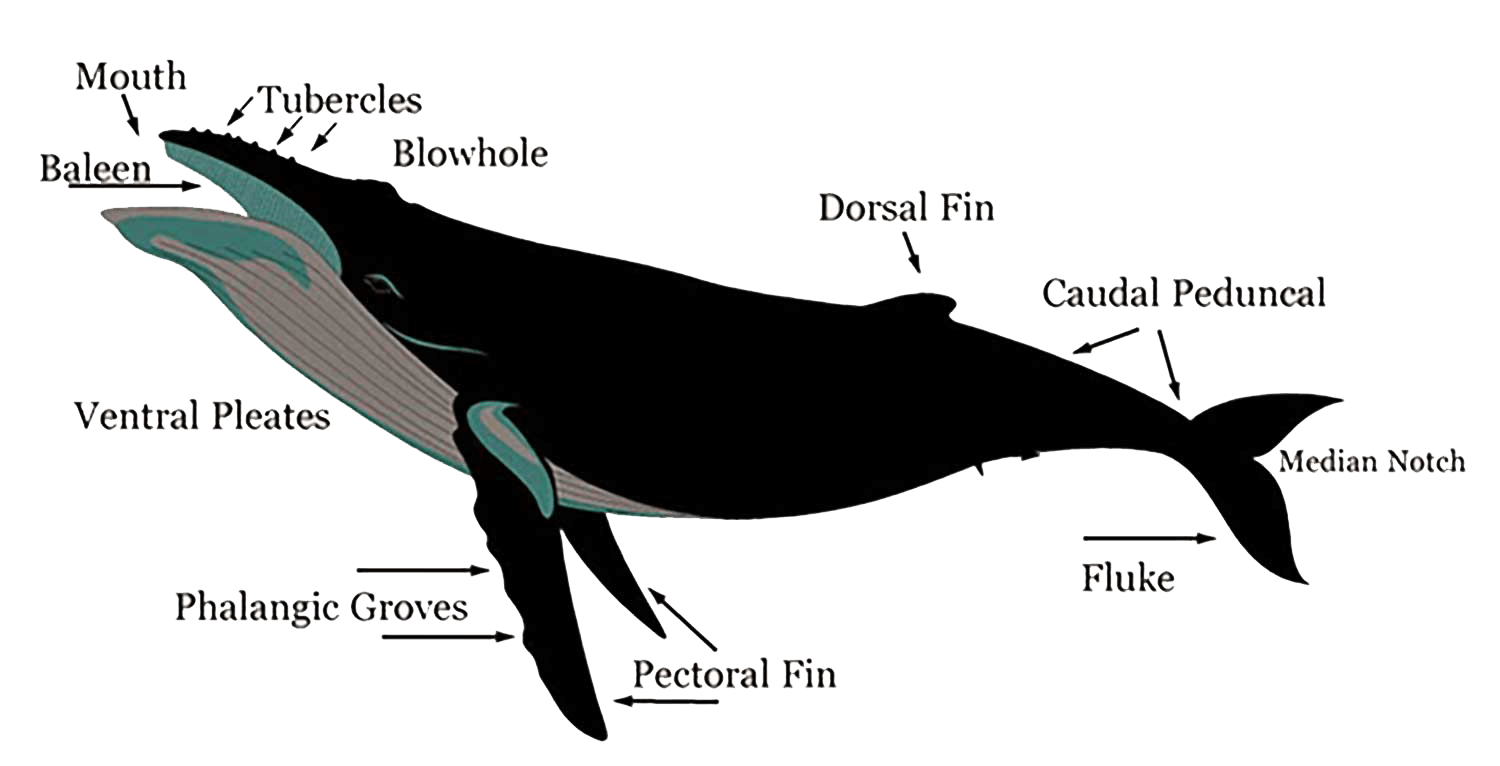The most acrobatic one of all – the Humpback whale
Humpback whales are classified as the 5th biggest of the rorqual whales. These magnificent marine mammals are baleen whales belonging to the Balaenopteridae family and have been estimated to have roamed the oceans for over 65 million years.
The Humpback whale is by far the favorite for enthusiastic whale watchers and nature lovers. They are known as the most acrobatic whale that has ever existed. Indeed thanks to their outstanding pectoral fin size and their immense agility, they often put on breathtaking displays.
The coasts of Baja California being on the direct pathway of the annual migration of the North Pacific population makes the Sea of Cortez a unique area to witness the humpbacks year after year.
If you’re eager to witness humpback whales in their natural habitat, join us and explore our captivating whale watching tours in San Jose del Cabo • Los Cabos • Mexico • B.C.S.
Appearance
When it comes to physical size, an adult humpback whale can grow to an average length of 40-60 ft long and weigh as much as 50 tons.
These marine mammals have robust, flexible bodies and are generally either a dark grey or black color. They have white patches on their stomachs, pectoral fins, and flukes. Their heads and jaws are covered with knobs called tubercles and their 2 blowholes located in the middle on top of the head.
Spanish name: Ballena Jorobada
Maximum Length: Male – 17m Female – 18.5m Calf – 5m
Maximum weight: Male – Unknown Female – 40,000 kg Calf: 900 kg
Diet: Krill, Schooling fish
Estimated population: 100,000
Anatomy
Humpback whales have flat backs, long pectoral fins, and distinctive flukes for navigation and breaching. Their long pectoral flippers earned them the name ‘big wing of New England’ due to their size and location of discovery.

Populations & Migrations
The Humpback Whale is a cosmopolitan species found in all the major ocean basins. The global population is estimated at around 250 000 individuals, all of which are divided into subpopulations: Eastern North Pacific, Central North Pacific, and Western North Pacific.
With few exceptions humpbacks are highly migratory. They feed in middle and high latitudes, polar waters and migrate to coastal tropical or subtropical waters to breed and give birth. Only the Arabian Sea subpopulation does not undergo an annual migration.
Whale Fingerprints
The rear fluke is generally black on the upper-side, and the underside is unique to each whale. Some are white, some black, and can be patterned or plain. This is the main reason this species is most studied, as each individual is easily identified – each fluke is as unique as a human fingerprint.
Epic Journeys
Their migration routes vary, but on an average are around 10000km – one of the longest journeys of any mammal on Earth. Although commercial whaling seriously depleted all humpback populations in the 20th century, the species has demonstrated remarkable resilience. Most populations are recovering and are no longer considered as an endangered species.
Behavior
The Humpback Whale is by far the most acrobatic whale on the planet, offering full body breaches, lob tailing, and flipper slaps several times in a row. They also lie on their side or back, holding one or both flippers in the air, spy hop, or head slap. The purpose of these behaviors is not always clear, but they all have different functions depending on the social or behavioral context.
Communication
Although all the above behaviors are useful ways for the whales to communicate, humpbacks engage in an even more advanced method – singing. Both females and males vocalize, but only males produce the long and complex song for which the species is famous. The songs are presumed to attract females, and perhaps also to establish dominance within the male population. Hence the reason the songs are mainly sung in the tropical breeding grounds.
Reproduction
Humpback whales breed in warm subtropical waters, where males compete fiercely for the right to mate with a female. After a male establishes dominance, the female accepts him as a partner, and they swim together for several days before mating. The gestation period is about 11.5 months, with peak birthing months in January and February. Cows typically have one calf and wait one to two years before breeding again. Calves stay with their mothers for up to two years before becoming independent.
Feeding Techniques
In summer, humpbacks primarily feed, relying on their fat reserves during winter mating. These baleen whales use feeding techniques like filter feeding and gulping, consuming large amounts of krill, plankton, and fish. Their 330 baleen plates filter food from water, enabling them to devour up to 2500kg of fish daily. Humpbacks are diverse eaters, known for their varied hunting methods, including the famous ‘bubble netting.




